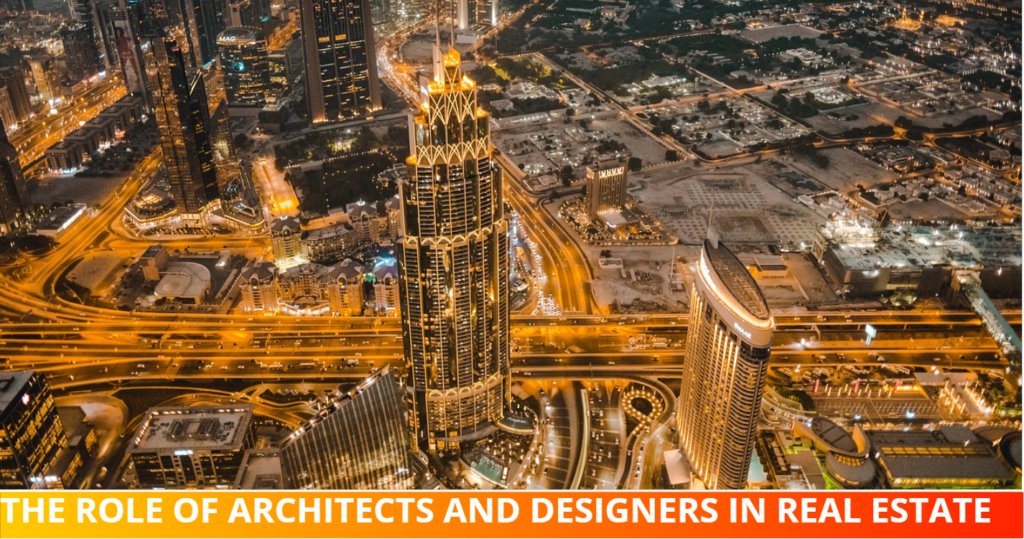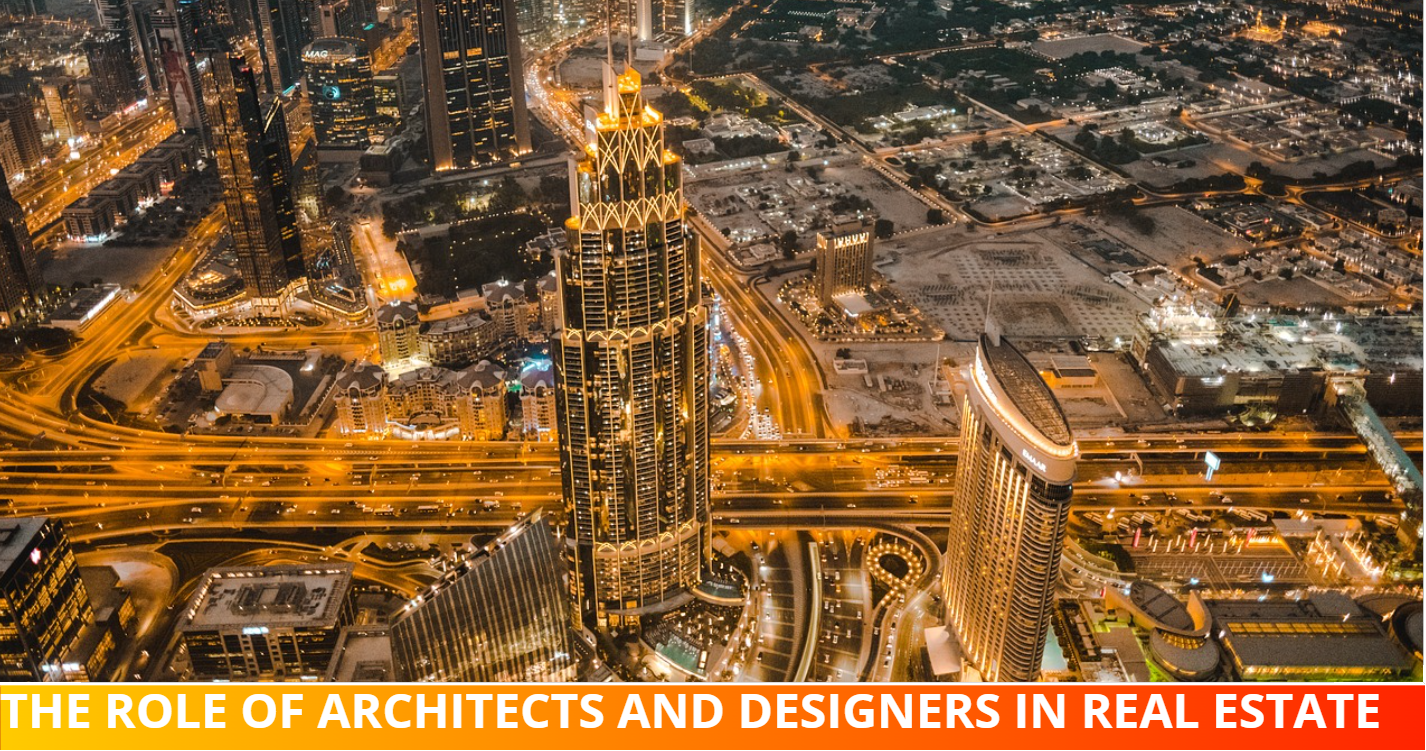Architects and designers play a crucial role in shaping the real estate landscape. Their expertise extends beyond aesthetics, influencing functionality, sustainability, and marketability of properties. Here’s an in-depth look at how architects and designers impact the real estate sector.
1. Conceptualization and Planning
Architects and designers are instrumental in the initial stages of a real estate project. They work closely with developers to understand the vision and objectives, translating these into feasible and innovative designs. Their role includes:
- Site Analysis: Evaluating the site’s potential and constraints to create designs that maximize its strengths.
- Zoning and Compliance: Ensuring that designs comply with local zoning laws, building codes, and environmental regulations.
2. Design Development
The core responsibility of architects and designers is to create detailed architectural plans and blueprints. This stage involves:
- Space Planning: Efficiently utilizing space to enhance functionality and comfort.
- Aesthetic Design: Creating visually appealing structures that align with the desired style, whether modern, traditional, or eclectic.
- Structural Integrity: Designing buildings that are safe, durable, and able to withstand environmental stresses.
3. Sustainability and Green Building
Sustainability is a growing concern in real estate. Architects and designers integrate eco-friendly practices into their designs to promote energy efficiency and reduce the environmental footprint. This includes:
- Green Building Materials: Selecting sustainable materials that minimize environmental impact.
- Energy Efficiency: Incorporating features like solar panels, energy-efficient windows, and green roofs.
- Water Conservation: Designing systems for rainwater harvesting, greywater recycling, and efficient plumbing.
4. Innovation and Technology
The use of advanced technology is transforming real estate design. Architects and designers leverage various tools and technologies to enhance their work:
- Building Information Modeling (BIM): Creating detailed 3D models to improve accuracy and collaboration.
- Smart Home Integration: Designing homes with integrated smart technologies for enhanced convenience and security.
- Virtual Reality (VR): Using VR to provide immersive walkthroughs of properties, aiding in design refinement and marketing.
5. Marketability and Value Addition
Good design significantly enhances the marketability and value of real estate properties. Architects and designers contribute by:
- Creating Unique Selling Propositions (USPs): Innovative and aesthetically pleasing designs attract buyers and tenants.
- Enhancing Curb Appeal: Attractive exteriors and landscaping improve the first impression of a property.
- Functional Layouts: Efficient layouts that cater to modern living standards increase desirability.
6. Project Management and Collaboration
Architects and designers often take on project management roles, coordinating with various stakeholders to ensure smooth execution. This involves:
- Collaboration with Engineers: Working with structural, mechanical, and electrical engineers to integrate all aspects of the design.
- Supervising Construction: Overseeing construction to ensure that the project adheres to the design specifications and quality standards.
- Client Communication: Keeping clients informed and involved throughout the design and construction process.
7. Adapting to Trends and Demands
Architects and designers must stay abreast of industry trends and changing consumer preferences. They adapt their designs to meet the evolving demands of the market, such as:
- Co-living and Co-working Spaces: Designing spaces that accommodate shared living and working environments.
- Health and Wellness: Integrating features like natural light, ventilation, and recreational areas to promote well-being.
- Urban Regeneration: Participating in the redevelopment of urban areas to create vibrant, sustainable communities.
Conclusion
Architects and designers are integral to the real estate industry, contributing to the creation of functional, sustainable, and aesthetically pleasing spaces. Their expertise not only adds value to properties but also enhances the quality of life for residents and users. As the real estate sector continues to evolve, the role of architects and designers will remain pivotal in shaping the built environment and meeting the challenges of the future.

FAQs: The Role of Architects and Designers in Real Estate
Q1: What is the primary role of architects and designers in real estate development? A: Architects and designers are responsible for conceptualizing, planning, and creating detailed architectural plans and blueprints. They ensure the design is functional, aesthetically pleasing, and compliant with local regulations, contributing significantly to the overall value and success of a real estate project.
Q2: How do architects and designers contribute to sustainability in real estate? A: Architects and designers promote sustainability by incorporating eco-friendly materials, energy-efficient systems, and water conservation measures into their designs. They aim to create buildings that have a minimal environmental impact and are resource-efficient.
Q3: What technologies do architects and designers use to enhance their work? A: Architects and designers use technologies such as Building Information Modeling (BIM), smart home integration, and Virtual Reality (VR). These tools help in creating detailed 3D models, designing smart homes, and providing immersive walkthroughs for better design visualization and marketing.
Q4: How do architects and designers enhance the marketability of real estate properties? A: By creating unique and aesthetically appealing designs, architects and designers enhance the curb appeal and functionality of properties. This makes the properties more attractive to buyers and tenants, increasing their market value and desirability.
Q5: What is the importance of space planning in real estate design? A: Space planning ensures that the available space is used efficiently and effectively. It involves designing layouts that maximize functionality, comfort, and convenience, which is crucial for creating livable and appealing spaces.
Q6: How do architects and designers collaborate with other professionals in real estate projects? A: Architects and designers collaborate with engineers (structural, mechanical, and electrical), contractors, and project managers to ensure that all aspects of the design are integrated and executed correctly. They also work closely with clients to align the design with their vision and requirements.
Q7: What role do architects and designers play in project management? A: In addition to design, architects and designers often oversee the construction process to ensure adherence to the design specifications and quality standards. They coordinate with various stakeholders and manage timelines and budgets to ensure the project is completed successfully.
Q8: How do architects and designers stay updated with industry trends and demands? A: Architects and designers keep up with industry trends by attending conferences, participating in professional organizations, and continuous education. They also conduct market research to understand evolving consumer preferences and incorporate these insights into their designs.
Q9: What are some examples of modern trends in real estate design that architects and designers are incorporating? A: Modern trends include designing co-living and co-working spaces, integrating health and wellness features such as natural light and ventilation, and participating in urban regeneration projects. These trends reflect the changing lifestyles and preferences of contemporary consumers.
Q10: Why is the role of architects and designers crucial in urban regeneration projects? A: Architects and designers are crucial in urban regeneration projects as they bring expertise in creating vibrant, sustainable, and aesthetically pleasing urban environments. Their designs help transform underutilized or deteriorated urban areas into thriving communities.
Q11: What challenges do architects and designers face in real estate projects? A: Challenges include navigating complex regulatory environments, balancing client expectations with practical constraints, ensuring sustainability while managing costs, and coordinating effectively with multiple stakeholders to deliver projects on time and within budget.
Q12: How do architects and designers ensure that their designs are compliant with local regulations? A: Architects and designers conduct thorough research on local zoning laws, building codes, and environmental regulations during the planning phase. They work closely with local authorities and consultants to ensure that all designs meet the necessary legal requirements.
Q13: What is the impact of aesthetic design on real estate value? A: Aesthetic design significantly impacts real estate value by enhancing the visual appeal and creating a distinctive identity for the property. Well-designed properties attract more interest from buyers and tenants, leading to higher demand and increased property values.
Q14: How do architects and designers contribute to the functionality of real estate properties? A: They focus on creating layouts that optimize the use of space, ensure ease of movement, and provide necessary amenities. Functional design improves the overall user experience and makes properties more practical and livable.
Q15: What is the significance of smart home integration in modern real estate design? A: Smart home integration is significant because it enhances convenience, security, and energy efficiency. By incorporating technologies like automated lighting, heating, and security systems, architects and designers meet the growing demand for connected and intelligent living spaces.





